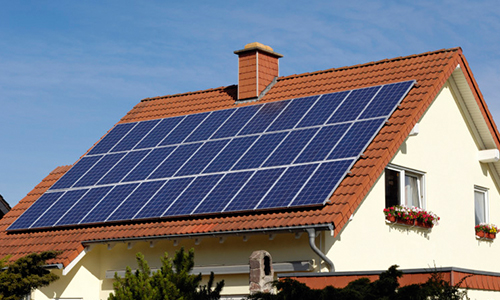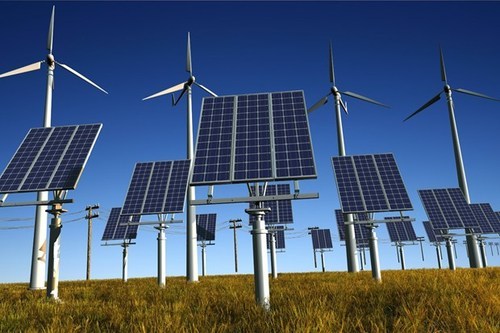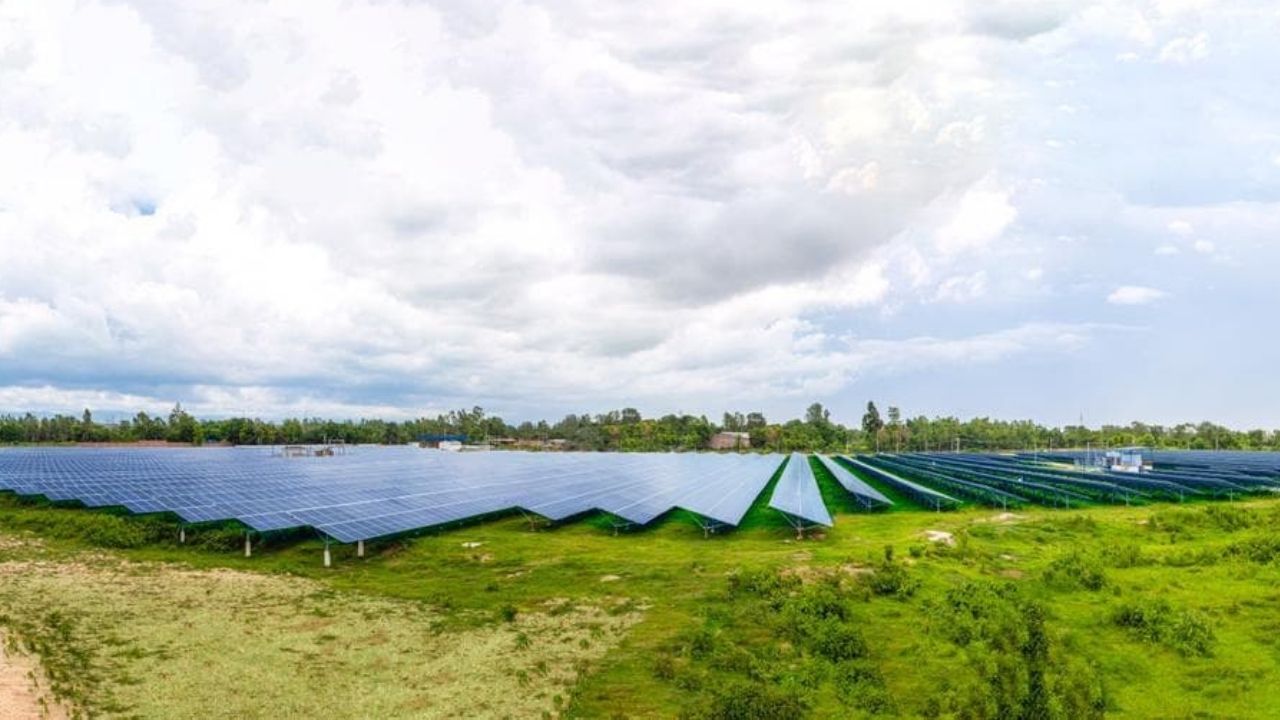Energy Update
Boosting share of alternative energy in power mix remains a challenge for Nepal

Kathmandu: For nearly three decades, the government has been promoting alternative energy other than hydropower to serve the populations that are out of the national electricity grid.
As a result, nearly a million solar home systems were installed, micro and small hydropower projects with combined capacity of 37.7 MW were developed, and 439,547 domestic biogas plants were set up, besides a few solar mid-grid systems, according to the Annual Report 2021-22 of the Alternative Energy Promotion Centre (AEPC).

Alternative energy is being promoted under the AEPC, which was established in November 1996.
Alternative energy has been useful especially in lighting homes in remote areas.
“Until 2017-18, just around 20 percent of the population was using these alternative sources of energy made available with the help of the AEPC and its partners,” said Nawa Raj Dhakal, acting executive director of the AEPC.

But in the past few years, many previously unserved areas have been connected to the national grid. “Now, 95 percent of the population has access to electricity,” said Dhakal. “Of them, 91 percent is connected to the national power grid while four percent is still relying on alternative energy sources other than hydropower.”
Referring to a study conducted in 2019 with support from the Asian Development Bank, Dhakal said that 99 percent of the population will have access to the national power grid by 2030.
Along with an increased grid connectivity, alternative energy projects are being forgotten. Reports have emerged of the sorry state of community-run micro-hydro projects in several districts after the advent of grid electricity.
Disappointing share in energy mix
According to the Nepal Energy Sector Synopsis Report-2022, prepared by the Water and Energy Commission, the share of traditional biomass in the total energy consumption in Nepal stood at 66 percent in 2021. The share of petroleum products was 18 percent followed by coal (9 percent), electricity (4 percent) and other renewables (2 percent).
Until 2009, the share of traditional energy sources in total energy consumption was 87 percent, but now it has decreased markedly as people have shifted to renewable sources, according to the report.
In December 2020, the Nepal government submitted its enhanced Nationally Determined Contributions (NDC) under the Paris Agreement for the period 2021-2030.
Nepal aims to ensure 15 percent of the total energy demand is supplied from renewable energy sources—hydropower and other alternative energy. Nepal also aims to generate a total of 15,000 MW of electricity by 2030 of which 5-10 percent will be generated from mini and micro-hydropower, solar, wind, and bio-energy projects.
“We have been proposing to increase the share of alternative energy [in the energy mix] to 20 percent,” said Dhakal. But, it will be hard because of the very low base.
Importance of alternative energy
Experts say the country needs to diversify its energy mix to ensure energy security considering the fact that Nepal is prone to earthquakes and landslides that could affect hydropower projects anytime.
“Nepal’s most hydropower plants have also been built in snow-fed rivers,” said Ram Prasad Dhital, former board member of the Electricity Regulatory Commission.
“The deposit of snow in the Himalayas is depleting due to climate change which may result in reduced water in rivers affecting the hydropower projects as well.”
This is why Nepal should promote alternative energy to ensure a reliable power supply. But the share of alternative energy in the energy mix is very small.
For example, around 44 megawatts of solar energy has been connected to the national grid as of the last fiscal year 2021-22, according to the Ministry of Energy, and this is just 1.94 percent of the country’s total installed capacity of over 2200MW.
However, experts say that the country has a lot of scope to promote solar, wind and biogas plants. According to the Nepal Energy Sector Synopsis Report-2022, the country has the potential to generate around 2,100MW of solar electricity.
Biogas is another renewable resource with a high potential. According to the report, around 1.9 million households have the potential to install biogas systems.
Nepal’s windpower potential is estimated at around 3000MW, but just 113.6 kW has been harnessed so far while projects totalling 5MW are under construction. The solar wind hybrid mini-grid system installed in Nepal reached 1500kW as of 2022, according to the report.
Inconsistent policy
Bishal Thapa, an expert on energy economics and financing, ran a campaign to reconnect rooftop solar plants with the national grid after the Nepal Electricity Authority (NEA) stopped buying solar electricity from rooftop plants in July last year.
He collected signatures from stakeholders for months to petition the NEA to roll back the decision to enable ‘net metering’ under which the power utility body pays its customers for the electricity supplied back to the national grid.
The Grid Connected Alternative Electricity Guidelines, 2021 has opened the door for net metering of solar home systems.
“Finally, the NEA board decided to continue the policy of net metering recently,” said Thapa, who is also managing director of Saral Urja, a company working in the solar sector.
Thapa said that the current policy of net metering was not encouraging enough. The NEA charges Rs11 per unit while it provides only Rs5.94 per unit for the solar power it buys from rooftop systems,” he said. “The NEA should take the policy of bartering the energy or keep the price of selling and receiving the power equally.”
Solar plant manufacturers also concur with Thapa.
Earlier, the NEA had been signing power purchase agreements with developers at a fixed rate of Rs7.30 per unit.
Arguing that the upper limit of the price set by the NEA is unfeasible for developing solar plants, a number of solar plant manufacturers said that they wouldn’t participate in a bid invited by the NEA on November 28 last year to install and sell buy upto 100MW of solar energy.
Topsun Energy, a private-sector solar company, was among the firms opposing the price offered by the NEA. “At the price offered by the NEA, solar plants cannot even break even,” said Kiran Gautam, managing director of the company.
Stakeholders say Nepal should promote alternative energy through tax exemptions, financing, and other facilitation measures. “There is no provision of subsidy for commercial alternative energy projects under the AEPC,” said Dhakal.
Conversation
- Info. Dept. Reg. No. : 254/073/74
- Telephone : +977-1-5321303
- Email : [email protected]













